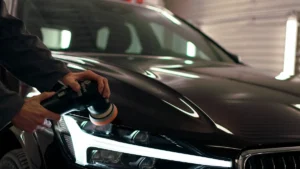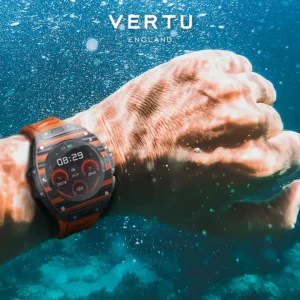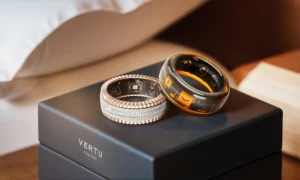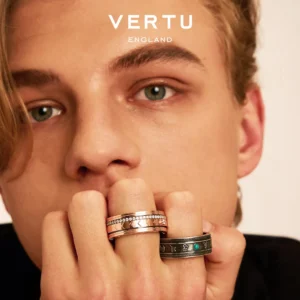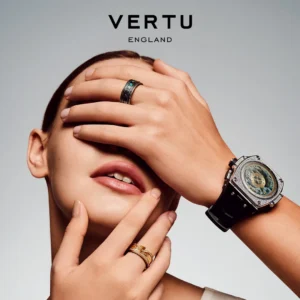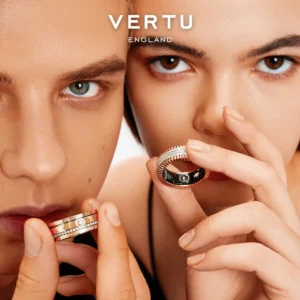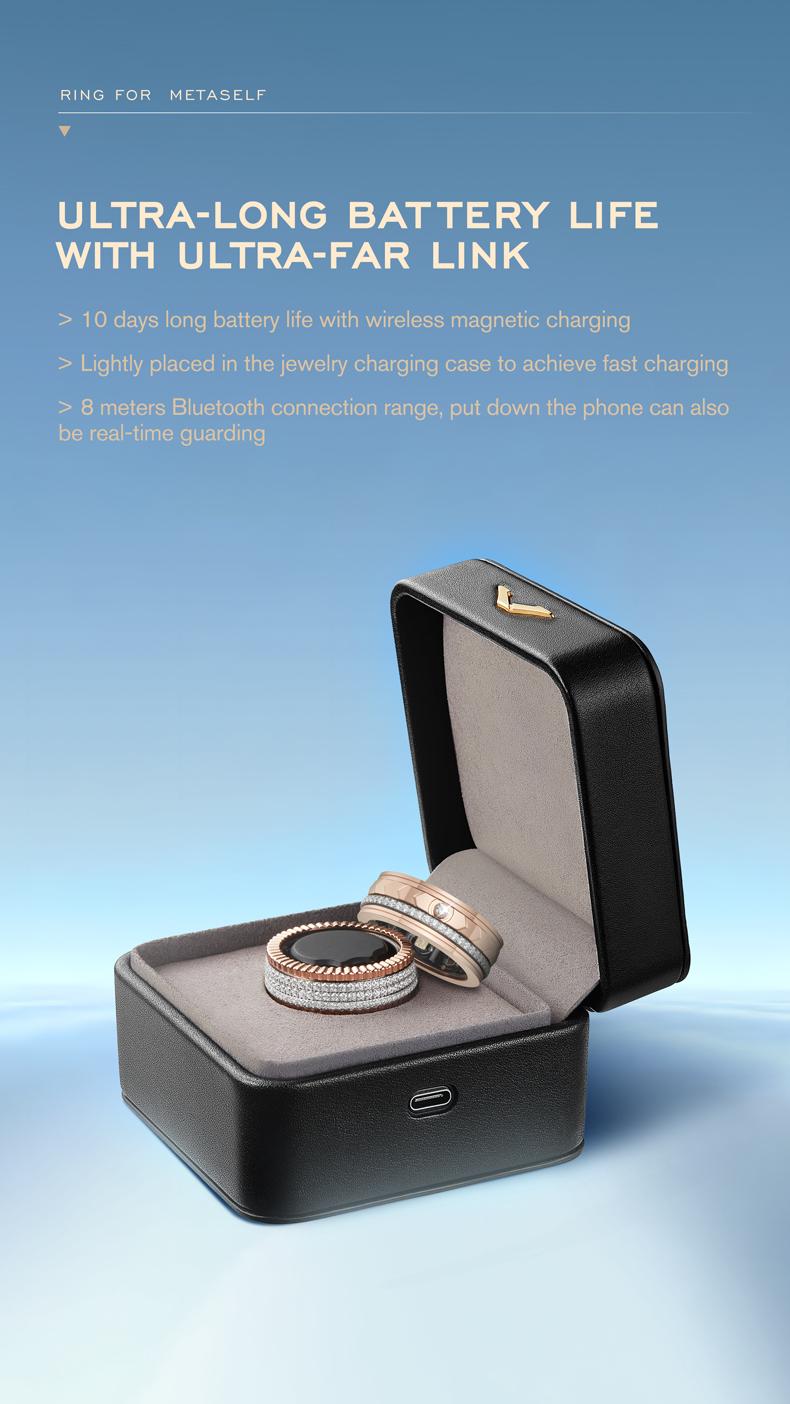
Have you ever wondered why Apple hasn’t jumped into the smart ring market? While the idea of an Apple smart ring might sound exciting, the company’s priorities suggest otherwise. Apple focuses on products that offer broad appeal and transformational potential, like the Apple Watch. Launching its own smart ring could risk cannibalizing its own products, especially the Apple Watch, which dominates the wearable space. Plus, Apple’s strategy revolves around enhancing user experience and expanding its ecosystem, not diving into niche markets like the smart ring concept discussed on platforms like apple ring reddit. For Apple, the revenue and functionality of a smart ring just don’t align with its vision.
Key Takeaways
-
Apple focuses on making products many people like, such as the Apple Watch. A smart ring might compete with the watch and hurt sales.
-
The company works on improving current products instead of making niche ones. A smart ring might not add enough new features to fit Apple's lineup.
-
Making a smart ring is hard because it’s small. It’s tough to fit sensors and batteries, which could make it less useful.
-
Not many people want smart rings compared to smartwatches. Apple prefers to spend money on products that more people will buy.
-
Apple cares about the environment. Making a smart ring could create more waste, which goes against their goals.
Strategic Considerations for Apple
Avoiding Cannibalization of the Apple Watch
Overlap with Apple Watch features and its impact on sales
When you think about Apple’s wearable lineup, the Apple Watch stands out as the star. If Apple were to launch its own smart ring, it could create an overlap with Apple Watch features, leading to internal competition. For instance, both devices might offer health tracking and notifications, making you question which one to choose. This overlap could hurt Apple Watch sales, which currently dominate the wearable market. Apple has always been cautious about cannibalization within its product lines. For example:
-
إن iPhone replaced the iPod but brought in new customers.
-
New iPhone models make older ones obsolete, yet Apple still sells millions.
This strategy works because Apple ensures each product adds unique value. A smart ring, however, might not offer enough differentiation to justify its place in the lineup.
Apple’s strategy to maintain the Apple Watch as the flagship wearable
Apple has invested heavily in making the Apple Watch its flagship wearable. Its sleek design, seamless integration with the Apple ecosystem, and focus on health monitoring set it apart. Features like heart rate tracking, sleep monitoring, and fitness tracking make it indispensable for many users. By keeping the Apple Watch at the forefront, Apple ensures it remains the go-to device for wearables, avoiding distractions from niche products like a smart ring.
Apple’s Focus on Core Innovations
Prioritizing refinement of existing products over niche markets
Apple’s long-term innovation priorities revolve around perfecting its existing products. Instead of chasing niche markets, Apple focuses on refining the iPhone, Apple Watch, and MacBook. This approach ensures that each product delivers exceptional functionality and user experience. A smart ring might seem innovative, but its limited appeal and functionality don’t align with Apple’s broader goals.
Limited strategic value of a smart ring in Apple’s ecosystem
A smart ring would struggle to find its place in the Apple ecosystem. Unlike the Apple Watch, which complements the iPhone and other devices, a ring might feel redundant. Apple prioritizes products that enhance the ecosystem’s simplicity and coherence. A smart ring could disrupt this balance, offering little strategic value in return.
Maintaining Apple’s Ecosystem Simplicity
How a smart ring could disrupt the seamless integration of Apple devices
Apple’s ecosystem thrives on simplicity. Its products are designed to work together effortlessly, creating a seamless experience for you. A smart ring could complicate this harmony. For example:
-
It might compete with the Apple Watch, leading to internal competition.
-
Its smaller size could limit functionality, making it less useful than other devices.
-
If it doesn’t integrate well, it could feel like a gimmick rather than a valuable tool.
These challenges could undermine the trust and loyalty Apple has built with its users.
Apple’s emphasis on simplicity and user experience
Apple’s marketing revolves around simplicity and confidence. The company ensures its products are easy to use, even for non-tech-savvy users. Adding a smart ring to the mix could dilute this message. Instead of enhancing your experience, it might create confusion about which device to use. Apple’s priorities lie in maintaining a streamlined ecosystem that “just works,” rather than introducing products that complicate the user experience.
Technical and Design Challenges of a Smart Ring
Size and Usability Constraints
Challenges in incorporating advanced sensors into a compact form factor
When it comes to designing a smart ring, size is one of the biggest challenges. Unlike larger devices like smartwatches, a ring has limited space for hardware. This makes it tough to include advanced sensors for health monitoring or connectivity without sacrificing performance. For example:
-
Miniaturized sensors are essential for tracking health metrics but complicate the design.
-
Battery technology must be efficient to fit into the small form factor.
-
Connectivity options need to use low energy to preserve battery life.
These constraints often lead to trade-offs. A smart ring might not deliver the same level of functionality as larger devices, which could leave you feeling underwhelmed.
Ensuring comfort and usability for diverse users
A smart ring must fit comfortably on your finger while offering practical features. However, its small size limits what it can do. For instance, it’s hard to include a display or advanced sensors without making the ring bulky. Plus, frequent charging could frustrate you, especially if you’re used to the longer battery life of other devices. A poorly designed ring might feel more like a novelty than a useful tool.
Battery Life and Performance Limitations
Balancing energy efficiency with performance in a small device
Battery life is a constant struggle for small wearables. The compact size of a smart ring means it can only house a tiny battery. This limits how long it can last before needing a recharge. While energy-efficient technology helps, it’s not enough to match the performance of larger devices. You might find yourself charging the ring more often than you’d like, which could impact your overall user experience.
Technical hurdles in achieving long-lasting battery life
Battery technology hasn’t advanced as quickly as other components. The storage capacity of small batteries remains a fundamental limitation. Designers must make trade-offs between battery size and device longevity. For example, power consumption varies based on how far the ring transmits data. This means the more you use it, the faster the battery drains. These hurdles make it hard to create a smart ring that’s both powerful and long-lasting.
Integration with Apple’s Ecosystem
Ensuring compatibility with iPhones, Apple Watches, and other devices
For a smart ring to succeed, it must work seamlessly with the Apple ecosystem. This means syncing data with your iPhone, Apple Watch, and other devices without any hiccups. However, achieving this level of compatibility is no small feat. The ring would need to handle data transmission efficiently while maintaining battery life. If it falls short, it could disrupt the smooth experience you’ve come to expect from Apple products.
Avoiding redundancy with existing Apple products
A smart ring might overlap with features already offered by the Apple Watch and iPhone. For example, it could duplicate notifications or fitness tracking, making it feel redundant. This overlap could confuse you about which device to use. Apple’s focus on simplicity means it avoids products that complicate its ecosystem. A smart ring might not add enough unique value to justify its place in the lineup.
Market and Consumer Insights on Smart Rings
Niche Appeal of Smart Rings
Limited consumer demand compared to smartwatches and other wearables
You might think smart rings are the next big thing, but their demand still lags behind other wearables like smartwatches. While the global smart ring market reached $210 million in 2023, it’s still a fraction of the smartwatch industry. In 2022, only 0.6 million smart rings were sold, compared to millions of Apple Watches. However, projections show promise, with sales expected to hit 1.6 million units by 2028. This growth highlights potential, but it’s clear that smart rings remain a niche product for now.
Smart rings’ appeal to a smaller, specialized audience
Smart rings cater to a specific group of users. Their compact design and advanced health features attract tech enthusiasts and health-conscious individuals. For example, continuous health monitoring and NFC payment capabilities make them appealing for those prioritizing convenience and wellness. Plus, their stylish designs merge fashion with technology, drawing in a broader audience. However, this specialized appeal limits their mass-market adoption compared to more versatile wearables like the Apple Watch.
Competition in the Wearable Market
Competitors like Oura and their focus on smart rings
Brands like Oura have carved out a space in the smart ring market by focusing on health tracking and data accuracy. Oura’s rings excel in monitoring sleep, heart rate, and other metrics, making them a favorite among fitness enthusiasts. Despite this, Apple dominates the wearable market with its advanced technology and seamless ecosystem. Apple’s reluctance to enter the smart ring space likely stems from its focus on maintaining this competitive edge in broader, more profitable markets.
Apple’s reluctance to enter markets with limited growth potential
Apple carefully evaluates market potential before launching new products. While the smart ring market is growing, it’s still small compared to other wearables. Apple prioritizes innovation in areas with broader appeal, ensuring its products resonate with a larger audience. Entering a niche market like smart rings might not align with Apple’s strategy of maximizing impact and profitability.
Overlap with Apple Watch Features
How a smart ring could duplicate existing Apple Watch functionalities
A smart ring would likely share many features with the Apple Watch, such as health monitoring and fitness tracking. This overlap with Apple Watch features could make the ring feel redundant. Why would you need both when the Apple Watch already offers a comprehensive suite of tools? The ring’s smaller size might limit its functionality, making it less versatile than the watch.
Apple’s strategy to avoid product redundancy
Apple avoids creating products that compete with each other. By focusing on the Apple Watch as its flagship wearable, Apple ensures its ecosystem remains streamlined and user-friendly. Adding a smart ring could complicate this balance, especially if it duplicates existing features. Apple’s strategy revolves around simplicity and coherence, which might explain its hesitation to explore the smart ring market.
Sustainability and Production Challenges
Manufacturing Complexities
Challenges in producing a high-quality, durable smart ring at scale
Creating a smart ring that balances durability, advanced health features, and style isn’t as simple as it sounds. You might not realize it, but manufacturing rings involves unique challenges. For starters, they need to come in multiple sizes, which complicates production. Customization for a perfect fit adds to the cost, requiring specialized tools and materials. Take a look at some of the hurdles manufacturers face:
|
Challenge |
Explanation |
|---|---|
|
Rings require multiple sizes, increasing production complexity. |
|
|
Customization Costs |
Customization for fit adds to manufacturing costs, requiring advanced tools. |
|
Environmental Impact |
Increased resource use for a niche product raises sustainability concerns. |
|
Recycling Challenges |
Difficulties in recycling small, intricate devices lead to more e-waste. |
These issues make it tough to produce a high-quality wearable like a smart ring at scale. Plus, the intricate design of miniaturized components adds another layer of complexity. For example, sourcing optically transparent materials for sensors or integrating batteries with sensors requires precision. This slows down production and raises costs.
Potential supply chain issues for miniaturized components
Miniaturization might sound like a win for innovation, but it creates supply chain headaches. Imagine trying to assemble tiny parts while ensuring they work seamlessly together. Manufacturers also need to manage power consumption carefully, as small batteries drain faster. Here’s a quick breakdown of common supply chain issues:
|
Supply Chain Issue |
الوصف |
|---|---|
|
The assembly of diverse spare parts is complicated, impacting efficiency. |
|
|
Material Compatibility |
Optically transparent materials for sensors complicate sourcing. |
|
Power Management |
Sensors and batteries must integrate well to manage power consumption. |
These challenges make scaling production for the smart ring market a daunting task.
Environmental Concerns
Apple’s commitment to sustainability and reducing e-waste
Apple takes sustainability seriously, and you’ve probably noticed it in their products. The company aims for carbon neutrality across its entire ecosystem by 2023. They’re also working toward creating 100% recycled products. Here are some of Apple’s key sustainability efforts:
-
All Apple offices, stores, and data centers run on 100% clean electricity.
-
Products like MacBook and Apple Watch use 100% recycled aluminum.
-
Leather is being phased out in iPhone cases and watch bands.
This commitment shows how deeply Apple values environmental responsibility.
How a smart ring might conflict with Apple’s environmental goals
A smart ring, despite its advanced health monitoring capabilities, could clash with Apple’s sustainability goals. Producing such a niche wearable requires valuable resources like metals, sensors, and batteries. For a product with limited functionality and a shorter lifecycle, this resource use might seem excessive. Recycling these small devices is another issue. Their intricate design and mixed materials make them hard to disassemble, even for advanced recycling facilities. This could lead to more e-waste, which doesn’t align with Apple’s vision of reducing environmental impact.
Defunct smart rings often end up in landfills, where they can leach heavy metals and plastics into the environment. Increased production also means more resource extraction and energy use, further straining the planet. Apple’s focus on long-lasting, versatile products makes it unlikely they’d pursue a smart ring that doesn’t fit their sustainability philosophy.
The Luxury Smart Ring Market: A Spotlight on Vertu
Vertu’s Approach to Smart Rings
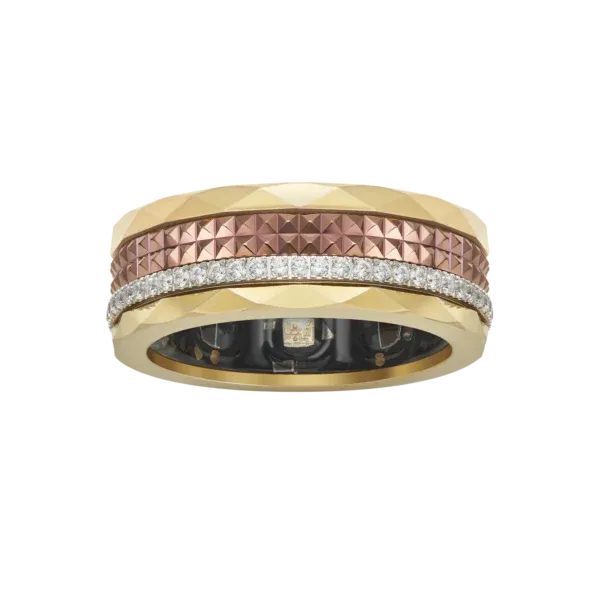
How the 2024 NEW VERTU AI DIAMOND RING – SHADOW PAIR EDITION combines luxury and technology
When you think of a smart ring, you probably imagine a small, functional device. Vertu takes this concept to a whole new level by blending cutting-edge technology with high-end luxury. The 2024 NEW VERTU AI DIAMOND RING – SHADOW PAIR EDITION isn’t just a wearable; it’s a statement piece. Crafted from premium materials like diamonds, 18K gold, and 925 silver, this ring exudes sophistication. At the same time, it offers advanced health monitoring features, including 24/7 heart rate tracking and non-invasive blood glucose detection. With a battery life of up to 10 days, it ensures you stay connected without constant recharging. This combination of elegance and functionality makes it a standout in the wearable market.
Differentiating features of Vertu’s smart ring in the wearable market
Vertu’s smart ring sets itself apart with features that cater to both tech enthusiasts and luxury lovers:
-
Luxury materials such as diamonds and 18K gold.
-
Advanced health monitoring, including sleep tracking and blood oxygen measurement.
-
A pivoting design that symbolizes good fortune and adds a unique touch.
-
Waterproof capabilities with a 5ATM rating, making it practical for everyday use.
This blend of style and technology ensures the ring appeals to those who value exclusivity and innovation.
Why Vertu’s Smart Ring Stands Out
The integration of advanced health monitoring with luxury design
You don’t often see a device that combines luxury and practicality as seamlessly as Vertu’s smart ring. It offers continuous health monitoring, tracking metrics like heart rate, sleep patterns, and even blood pressure. What’s more, it does this while maintaining an elegant design that complements any outfit. The non-invasive blood glucose detection is a game-changer, providing valuable data without the need for needles. This integration of health-focused functionality with a luxurious aesthetic makes the ring truly unique.
Addressing niche market needs with exclusivity and innovation
Vertu understands that not everyone wants a mass-market wearable. Their smart ring targets a niche audience that values both high fashion and advanced technology. Here’s how they meet these needs:
|
Feature |
الوصف |
|---|---|
|
Luxury Design |
Crafted from premium materials like 18K gold and diamonds, appealing to exclusivity. |
|
Advanced Health Monitoring |
Offers continuous data collection including heart rate, sleep patterns, and non-invasive glucose monitoring. |
|
Customizable Design |
Features a pivoting mechanism symbolizing elegance and good fortune. |
|
Non-invasive Health Tracking |
Monitors vital metrics like blood pressure and oxygen levels conveniently. |
|
Premium Packaging |
Comes with sleek accessories like a wireless charging dock that complements the ring's design. |
|
Waterproof Rating |
Operates underwater with a 5ATM rating, adding practicality to its luxurious design. |
By combining functionality with exclusivity, Vertu has created a smart ring that’s not just a gadget but a lifestyle accessory. It’s perfect for those who want to make a statement while staying connected.
Apple’s decision to avoid the smart ring market makes sense when you consider their priorities. The saturated wearables market, combined with the risk of cannibalization of the Apple Watch, makes a smart ring less appealing. Apple focuses on refining existing products like the Apple Watch, which already excels in health tracking and user experience. Adding a smart ring could disrupt their ecosystem without offering unique functionality or significant revenue.
On the other hand, Vertu’s 2024 NEW VERTU AI DIAMOND RING – SHADOW PAIR EDITION shows how innovation can thrive in niche markets. By blending luxury materials with advanced health monitoring features, Vertu has created a product that caters to exclusivity and health-conscious individuals. This approach highlights how brands can succeed by addressing specific needs with elegance and innovation.
التعليمات
What makes a smart ring different from other wearables?
A smart ring is smaller and more discreet than other wearables like smartwatches. It offers features like health tracking and notifications while maintaining a stylish design. Its compact size makes it ideal for those who prefer minimalistic accessories.
Why hasn’t Apple entered the smart ring market?
Apple focuses on products with broad appeal and high functionality. A smart ring might overlap with the Apple Watch, creating redundancy. Apple also prioritizes simplicity and sustainability, which a niche product like a smart ring might disrupt.
Are smart rings suitable for everyday use?
Yes, most smart rings are designed for daily wear. They’re lightweight, comfortable, and often waterproof. Many models, like Vertu’s AI Diamond Ring, combine advanced features with durability, making them practical for various activities.
How do smart rings track health metrics?
Smart rings use advanced sensors to monitor metrics like heart rate, sleep patterns, and blood oxygen levels. These sensors collect data and sync it with your smartphone for easy access and analysis.
Can a smart ring replace a smartwatch?
Not entirely. While a smart ring offers many features, it lacks the display and versatility of a smartwatch. It’s a great complement to other devices but may not fully replace them for all users.


